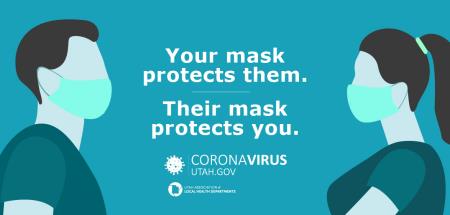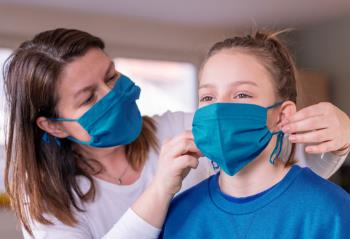It is generally accepted by public health authorities that until an effective vaccine is deployed and achieves immunity in 60 to 70 percent of the U.S. population, prevention will have to depend on more elementary protective measures. These include masking, avoiding large gatherings, and maintaining social distancing in addition to increasing air exchange rates in confined areas such as packing plants.
The wearing of masks to prevent what is predominantly an aerosol transmitted infection is generally accepted. Regrettably in months leading up to the November general election masks were politicized, deterring adoption of this elementary and inexpensive preventive measure, especially in rural communities.
 Models evaluated by the University of Washington Institute for Health Metrics and Evaluation predict that if 95 percent of state residents wore masks regularly in public, more than 1,400 COVID-19 deaths would be averted through March 1st. The rapidly ascending incidence of COVID-19 in all states, and especially those in the Pacific Northwest, has led to greater mask compliance. The University of Washington Institute determined that the use of masks, when outside homes, increased from 50 percent in July to 70 percent in mid-November. Dr. Judith Wasserheit, Chair of the University of Washington Department of Global Health, stated “I think we all recognize that COVID-19 infections are exploding and the data are clear that masks are one of the best prevention tools we have.”
Models evaluated by the University of Washington Institute for Health Metrics and Evaluation predict that if 95 percent of state residents wore masks regularly in public, more than 1,400 COVID-19 deaths would be averted through March 1st. The rapidly ascending incidence of COVID-19 in all states, and especially those in the Pacific Northwest, has led to greater mask compliance. The University of Washington Institute determined that the use of masks, when outside homes, increased from 50 percent in July to 70 percent in mid-November. Dr. Judith Wasserheit, Chair of the University of Washington Department of Global Health, stated “I think we all recognize that COVID-19 infections are exploding and the data are clear that masks are one of the best prevention tools we have.”
Accordingly, the University of Washington will undertake a study of the motivation to wear masks and to determine how health departments and other state and local agencies should focus messaging to increase compliance. The University of Washington study will be sponsored by the Washington Department of Health. Data will be collected among communities across King County, including the metropolitan area of Seattle. Emphasis will be placed on retail outlets including supermarkets and big-box stores, neighborhood markets and parks to determine the proportion of individuals wearing masks with respect to gender and age. The intent of the study is to determine locations where mask usage is lowest and to establish the demographics of non-compliers. It is anticipated that other counties may follow with their own investigations using the King County template.
 Opponents to wearing masks are frequently deniers of COVID-19 as a significant infection. Apparently those who reject the reality of the pandemic fail to recognise 13 million diagnosed cases and 265,000 fatalities since January 2020. Those opposed to mask-wearing invoke discomfort and peer pressure. They are frequently also anti-vaxxers and regard recommendations by health authorities as an intrusion on personal freedom.
Opponents to wearing masks are frequently deniers of COVID-19 as a significant infection. Apparently those who reject the reality of the pandemic fail to recognise 13 million diagnosed cases and 265,000 fatalities since January 2020. Those opposed to mask-wearing invoke discomfort and peer pressure. They are frequently also anti-vaxxers and regard recommendations by health authorities as an intrusion on personal freedom.
To justify noncompliance, pseudoscientific justifications gleaned from the internet are invoked. A frequently quoted study that did not demonstrate any significant advantage from masking was conducted in Denmark. The trial compared the incidence rate of COVID-19 among volunteers either wearing or not wearing masks in public. A total of 3,030 participants were assigned to the mask group and 2,994 to the controls. Of the 4,862 who completed the study, 1.8 percent of the masked group contracted COVID-19 compared to 2.1 percent of the non-masked controls representing a non-statistically significant difference. The trial was flawed by a low incidence rate over the duration of the comparison and the fact that the masked group effectively only complied with the mask requirement in public for half of the time. It is regretted that this publication has been misquoted and used by opponents of masking, despite the obvious deficiencies in experimental design and execution.
It is reiterated that until immunization is achieved through extensive vaccination, masking and other common sense precautions as recommended by public health authorities and reputable scientists will be essential to suppress the escalating incidence of COVID-19. Without suppressing the incidence rate of COVID-19 we will not be able to restore our economy and return to a “new-normal” way of life.
*Bundgaard, H. et al Effectiveness of Adding a Mask Recommendation to Other Public Health Measures to Prevent SARS-CoV-2 Infection in Danish Mask Wearers. Annals of Internal Medicine. doi.org/10.7326/M20-6817